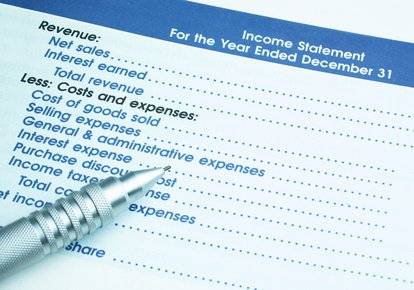The Big Problem No One is Talking About

Out of 28 million businesses1 in America, roughly 10 million owners plan to sell or close their businesses over the next 10-15 years 2, the majority because they need to fund their retirement.
And nearly 80 percent of these business owners plan to fund 60 to 100 percent of their retirement by selling their business.
But there’s a big problem no one wants to talk about.
Seventy-two percent, have no exit plan.3
Of the remaining, only half put a strategy in place; the other half are working on a plan.
Find a Sense of Urgency
We understand you’re massively tasked with running your business. And that you get little time off for the luxury of advanced planning. But without an exit plan, you risk losing or devaluing your largest asset.
And it’s not just only about you.
Selling closely held businesses affects tens of millions of people. Small business employs more than 80 percent of all U.S. workers. Those folks may be family members, long-time employees or friends.
Roush Investment Group has always been a crusader for small, mid-size closely held businesses. That’s why we’re here to help you prepare your business exit plan.
 This post, the last in a four-part series, looks at how to prepare to sell your business, and what to do even if you don’t want to sell. First, a word about family-owned businesses.
This post, the last in a four-part series, looks at how to prepare to sell your business, and what to do even if you don’t want to sell. First, a word about family-owned businesses.
Difference with Family-Owned Business
The majority of family business owners believe their families will control their business in five years, but succession statistics tell us otherwise.
According to The Family Firm Institute 4, only about 30 percent of family-owned businesses survive into the second generation, 12 percent are still viable into the third generation, and only about 3 percent of all family businesses operate into the fourth generation or beyond.
While this is a sad reality, there’s a solution to stem the loss. Business failures happen because of the absence of family business succession planning, supported by an exit strategy plan.
 In a recent article in Forbes 5, contributing writer Brent Beshore offers this wake-up call:
In a recent article in Forbes 5, contributing writer Brent Beshore offers this wake-up call:
“We are in the beginning of a transition within the American economy where more than half of all businesses with employees will need to sell, restructure, or close their doors. The numbers are finite and inescapable. Mortality is a real thing. Liquidity issues and estate taxes don’t take care of themselves. Without a plan, the likely result is a legacy of chaos and confusion.
Whether begrudgingly or willingly, every Baby Boomer owner must confront this question: What will my company look like without me involved, and what process needs to take place to ensure my family’s financial health and the company’s prosperous future?”
Business Exit Planning Process
Exit planning creates and executes on a strategy to enable owners to leave their business interests in their own time and on their terms.
Exit planning is an established process with a written roadmap, involving a team of professionals, led by an exit planning advisor who guides the path to results.
Most entrepreneurs go into business intending to build, sell, and move on. Experts say you should begin planning for your exit the day you open.
You invest decades building and running their businesses. One day, you know you’re done. You want something different out of life, less stressful, perhaps, more meaningful. You simply want to stop grinding it out every day.
Even if selling your business seems far in the distance, at some point, every business owner steps away from command due to:

- Retirement
- Ready to pass it on to children or other family members
- Ready to sell
- Faced with health issues limiting the ability to run the business
- Premature death of owner or business partner
Get the Maximum Value
Your documented exit plan will help you get the maximum value for your business, whatever your goal. Among the personal exit goals we encounter, owners want to:
- Use the sale of the business to fund retirement
- Create a business that succeeds for future generations
- Enjoy more free time and time with the family
- Travel and see the world
- Reduce stress and focusing on healthy living
Exit planning may take as little as six months to as many as five years to fully plan and implement an exit strategy, with the average time of two years.
Make sure the business is ready, too. You need the right people and systems in place for a smooth transition and to meet your ideal selling price. Of course, the business needs to showcase solid financials to attract the right buyer.
Prospective buyers will want to know how involved is the owner? If he or she is integral to the success of the business, the buyer will mostly be buying a job. We often see the purchase price based on an earn-out formula requiring the owner to stay on for a few years. If the business can run without you, it will be more valuable to a buyer.
As an owner, you need a strong understanding of the market value of your business. Once you do, you can take strategic measures to increase the market value, where needed.

Four Steps and the Questions to Ask Yourself 6
Step 1─Exit Objectives
Have you determined your primary planning objectives in leaving the business, such as:
- Is the business ready to sell? Right time? Is the market right?
- Your desired departure date?
- The income you need to achieve financial security?
- To whom do you sell or leave the business?
- The value you are seeking? How is a buyer going to value my business?
- How you plan to treat valued employees once you exit?
Step 2─Valuation and Cash Flow
It’s important to understand how businesses in your industry value themselves and determine price.
- Do you know what your business is worth?
- Do you know what the business’s future cash flow is likely to be after you leave it?
- How do buyers determine price in your industry?
Step 3─Making the Business More Valuable
Increase value by knowing how to find hidden value and account for it in your in planning.
- Do you know how to increase the value of your ownership interest?
- Do you know where the hidden value is in your company?
- Do you know how to pull value out of the business before the sale?
Step 4─Sale or Transfer to Third Parties
- Who should be on your team when you sell?
- Is your buyer a strategic or financial buyer? Employees or family members?
- Can your business survive without you or a key customer?
- Are you willing to stay on?
- What are the deal breakers?
- Would you consider alternatives to an outright sale?

What You Can Do Right Now
This list is certainly not exhaustive; however, it will help you get started.
Improve Your Financials
- Review your balance sheet and income statement; clean up your books
- Know the cost of each component of your product or service
- Acquisition costs for a new customer/client
- Rationale behind the pricing strategy
- Onboarding costs for new hires
If you’re exit planning, consider ways to consistently increase sales and revenue, with special attention to recurring revenue sources to generate gross income for a new owner. Build recurring revenue streams and shore up pending customer or vendor contracts to give buyers the comfort of a consistent revenue flow.
Analyze Your Market
- Evaluate what external trends may impact the strengths and weaknesses of your business
- Study market size and competition; pinpoint differentiation
- Understand your ability to cope with changes on near or long-term horizon
Improve Your Operations
- Ensure the right management team is in place
- Document your processes
- Polish up your facilities
Determine Your Business Worth
- Be realistic how much your company is worth
- Do your research; don’t be blindsided
- Get clear about the hidden value in:
- Your intellectual property
- Your employees (retain key talent)
- Your distribution strategy
- Consult an investment banker familiar with your market
***
It’s time to decide. Once you’re ready to do a business exit plan, contact us.
We’ll share a list of documents you need; then we’ll sit down together, review your goals, and set up a course of action. We’ll do the worry and work, so you don’t have to.
2 CNBC.com, April 13, 2015, “Small Biz Owners Ignoring Succession Advice” by Lori Ioannou, senior editor http://www.cnbc.com/2015/04/13/ew-small-biz-have-an-exit-plan.html
3 Securian Financial Group survey, February 18, 2014, “Small Business Owners Plan to Exit Soon, But Have No Exit Plans,” and 2015 Small Business Owner Life Stage Study.
4 Family Business Institute, website https://www.familybusinessinstitute.com/consulting/succession-planning/
5 Forbes, October 11, 2015, “Why Small Businesses Are Feeling An Economic Crunch,” http://www.forbes.com/sites/brentbeshore/2015/10/11/the-small-business-crunch/#2648f5bb5dc7
6 Some questions drawn from Entrepreneur Magazine, March 6, 2013, “10 Questions to Ask Before Selling Your Business,” by Lisa Girard.
If we can be of service, please contact me below.

Rick Roush AIF®, CPFA
Roush Investment Group
O: 559.579.1490 F: (559) 490-2015 C: (559) 285-3318
